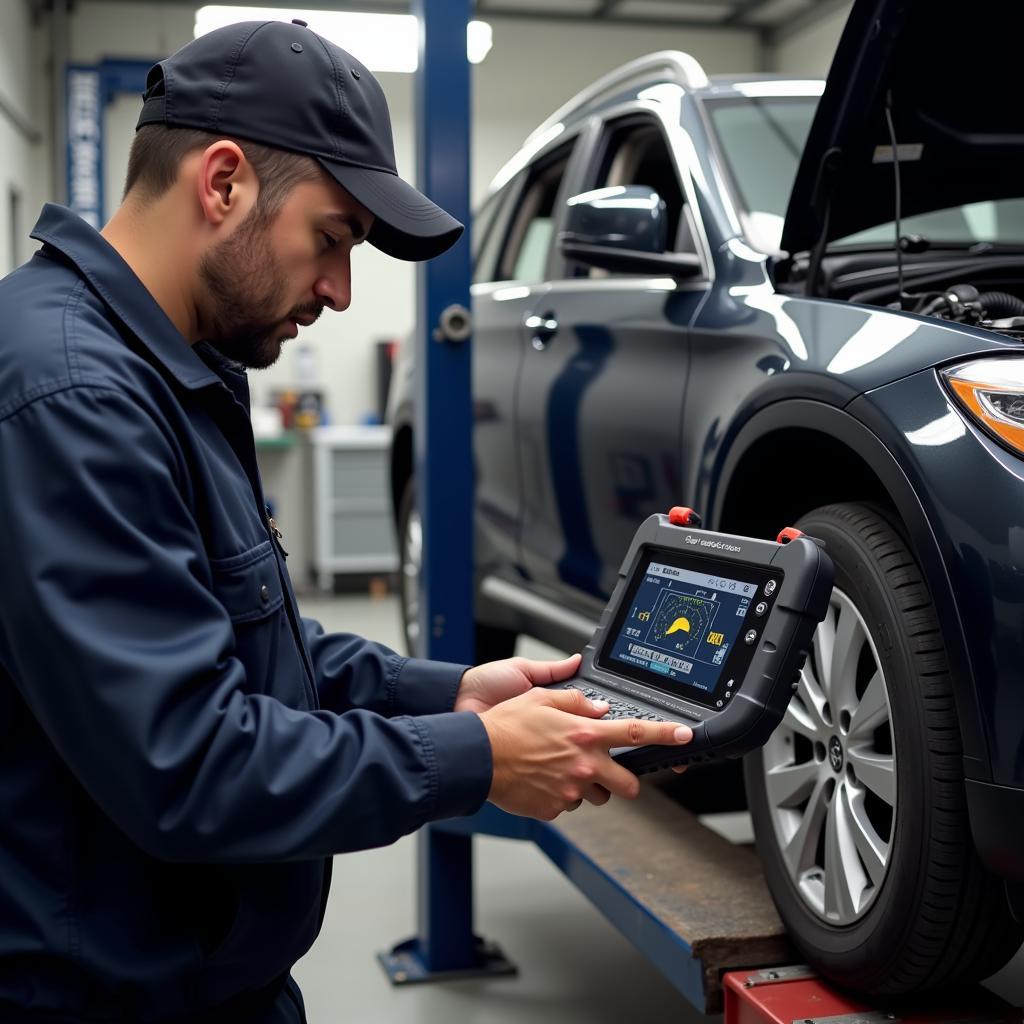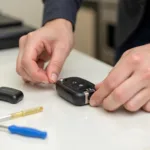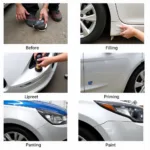Performing a car diagnostic is crucial for maintaining your vehicle’s health and identifying potential issues before they escalate. Whether you’re experiencing a noticeable problem or simply practicing preventative maintenance, understanding how to do a diagnostic on a car can save you time, money, and frustration. This guide provides a comprehensive overview of car diagnostics, from understanding the basics to utilizing advanced techniques.
Want to delve into specific software solutions? Check out our resources on car diagnostic tuning software for laptop free download.
Understanding the Importance of Car Diagnostics
Regular car diagnostics can reveal hidden problems that might not be immediately apparent. A thorough diagnostic can pinpoint the root cause of issues like decreased fuel efficiency, strange noises, or warning lights on your dashboard. It’s like giving your car a regular health check-up, ensuring everything runs smoothly and efficiently. Early detection often leads to less expensive repairs and prevents potential breakdowns.
Methods for Car Diagnostics
Several methods are available for performing car diagnostics, ranging from simple visual inspections to utilizing professional-grade diagnostic tools.
Visual Inspection
The first step in any car diagnostic is a visual inspection. This involves checking fluid levels, examining belts and hoses for wear and tear, and looking for any obvious signs of damage or leaks. While this method might not identify complex electronic issues, it can reveal simple problems that can be easily fixed.
OBD-II Scanner
The On-Board Diagnostics II (OBD-II) scanner is a valuable tool for accessing your car’s computer system and retrieving diagnostic trouble codes (DTCs). These codes provide clues about potential issues within various systems, such as the engine, transmission, and emissions control. Many affordable OBD-II scanners are available on the market, making this method accessible to DIY enthusiasts. You can even find resources on downloading car diagnostic programs.
Professional Diagnostic Tools
For more complex issues, professional mechanics utilize advanced diagnostic tools. These tools can access more detailed information about your car’s systems and perform more comprehensive tests. While these tools are typically more expensive, they can provide a more accurate diagnosis and help identify intermittent problems that might be difficult to detect with other methods. If you’re considering purchasing diagnostic equipment, you can explore options for car doc diagnostic tools for sale.
DIY vs. Professional Diagnostics
While DIY diagnostics can be a cost-effective solution for simple issues, it’s essential to recognize the limitations. For complex problems or if you’re unsure about interpreting diagnostic codes, seeking professional help is crucial. A qualified mechanic has the expertise and equipment to perform a thorough diagnostic and recommend the necessary repairs. Wondering about the cost? Learn more about how much a car diagnostic cost.
 Mechanic Performing a Car Diagnostic with a Professional Tool
Mechanic Performing a Car Diagnostic with a Professional Tool
Interpreting Diagnostic Trouble Codes (DTCs)
Once you’ve retrieved DTCs using an OBD-II scanner, the next step is to interpret them. Each code corresponds to a specific problem within a particular system. You can find detailed information about DTCs online or in repair manuals. However, keep in mind that DTCs are just clues, not definitive diagnoses. Further investigation might be needed to pinpoint the exact cause of the problem.
Common Car Diagnostic Scenarios
Let’s explore some common car diagnostic scenarios and how to approach them:
-
Check Engine Light: This is a common trigger for a car diagnostic. Use an OBD-II scanner to retrieve the DTCs and identify the potential issue.
-
Poor Fuel Economy: A sudden drop in fuel economy could indicate several problems, such as a faulty oxygen sensor or a clogged fuel filter. A diagnostic can help pinpoint the cause.
-
Unusual Noises: Strange noises coming from your car can indicate various issues, from worn brake pads to problems with the suspension system.
-
Car Won’t Start: This could be due to a dead battery, a faulty starter, or a problem with the fuel system. A diagnostic can help narrow down the possibilities.
Conclusion
Knowing how to do a diagnostic on a car is a valuable skill for any car owner. By understanding the various methods and tools available, you can take proactive steps to maintain your vehicle’s health and address potential issues before they become major problems. Remember, while DIY diagnostics can be helpful, consulting a qualified mechanic is essential for complex problems. Regular car diagnostics, combined with proper maintenance, can significantly extend the life of your vehicle and ensure a safe and enjoyable driving experience. You might also want to explore free software options for diagnosing all modern cars.
FAQ
- What is an OBD-II scanner?
- How do I interpret diagnostic trouble codes?
- Can I perform a car diagnostic myself?
- When should I take my car to a mechanic for a diagnostic?
- What are some common causes of the check engine light?
- How much does a professional car diagnostic typically cost?
- Are there free car diagnostic software options available?
Other helpful articles:
- We have a resource on how much a car diagnostic cost that might be useful.
Need Help?
Contact us via WhatsApp: +1(641)206-8880 or Email: [email protected]. Our 24/7 customer support team is ready to assist you.


